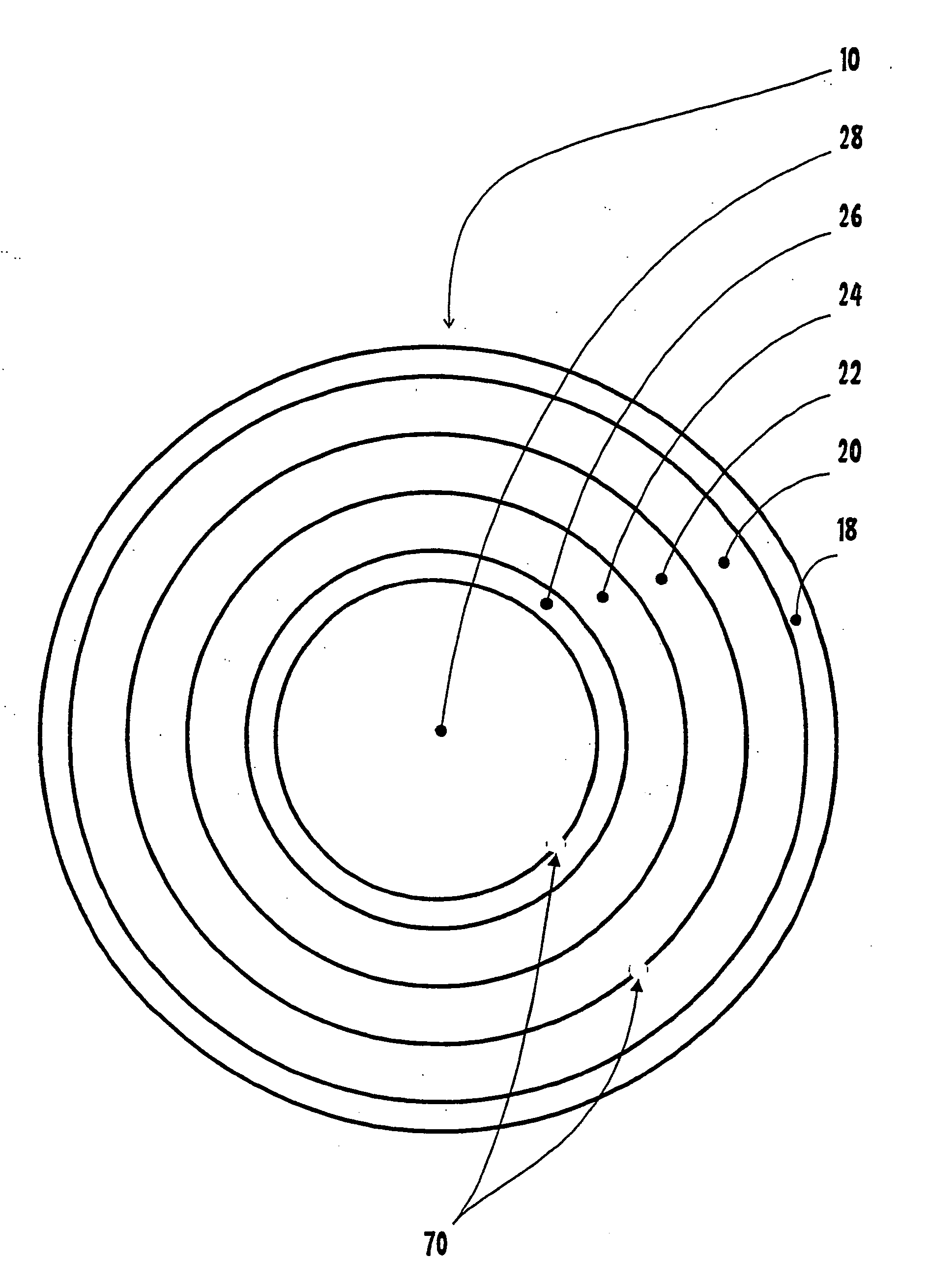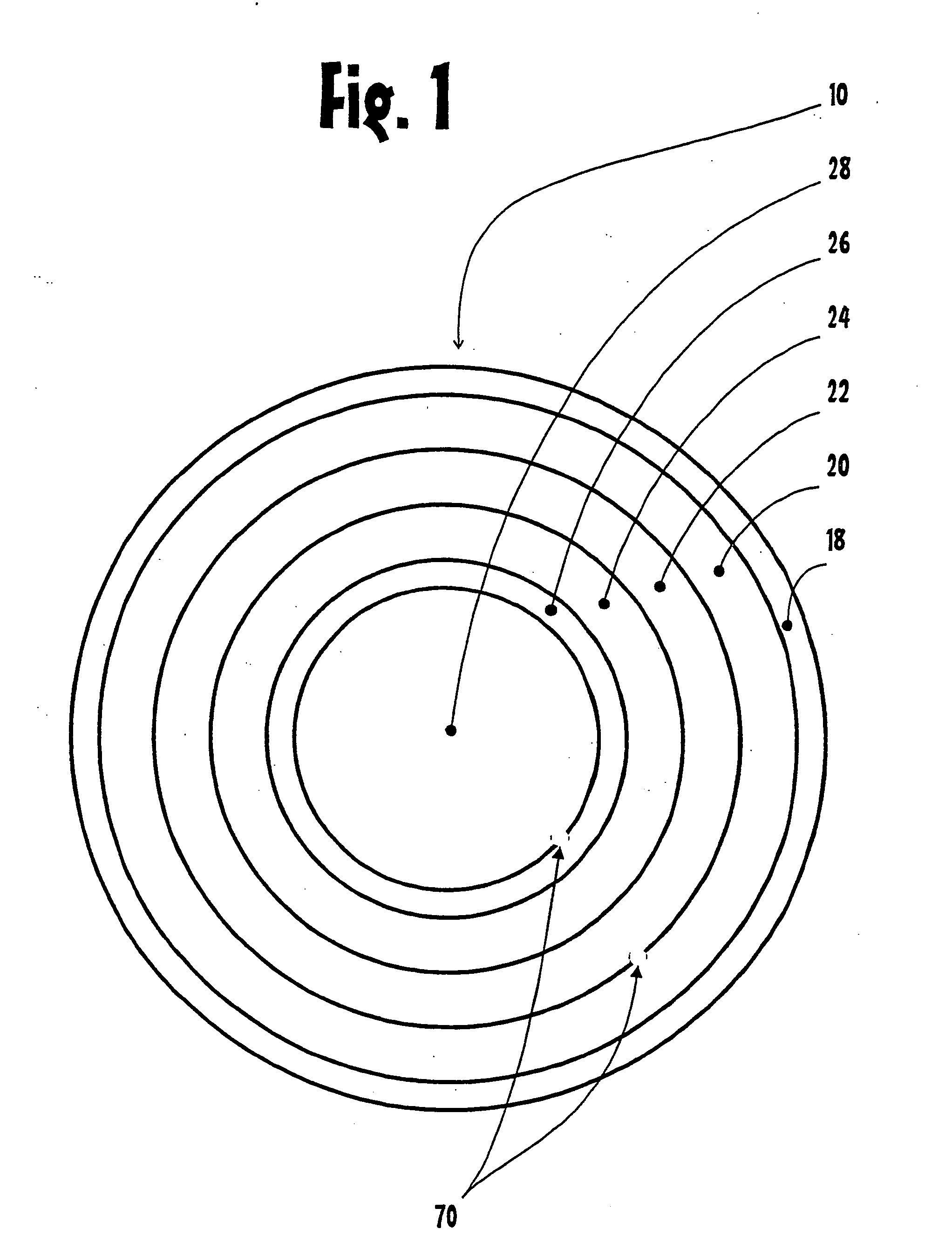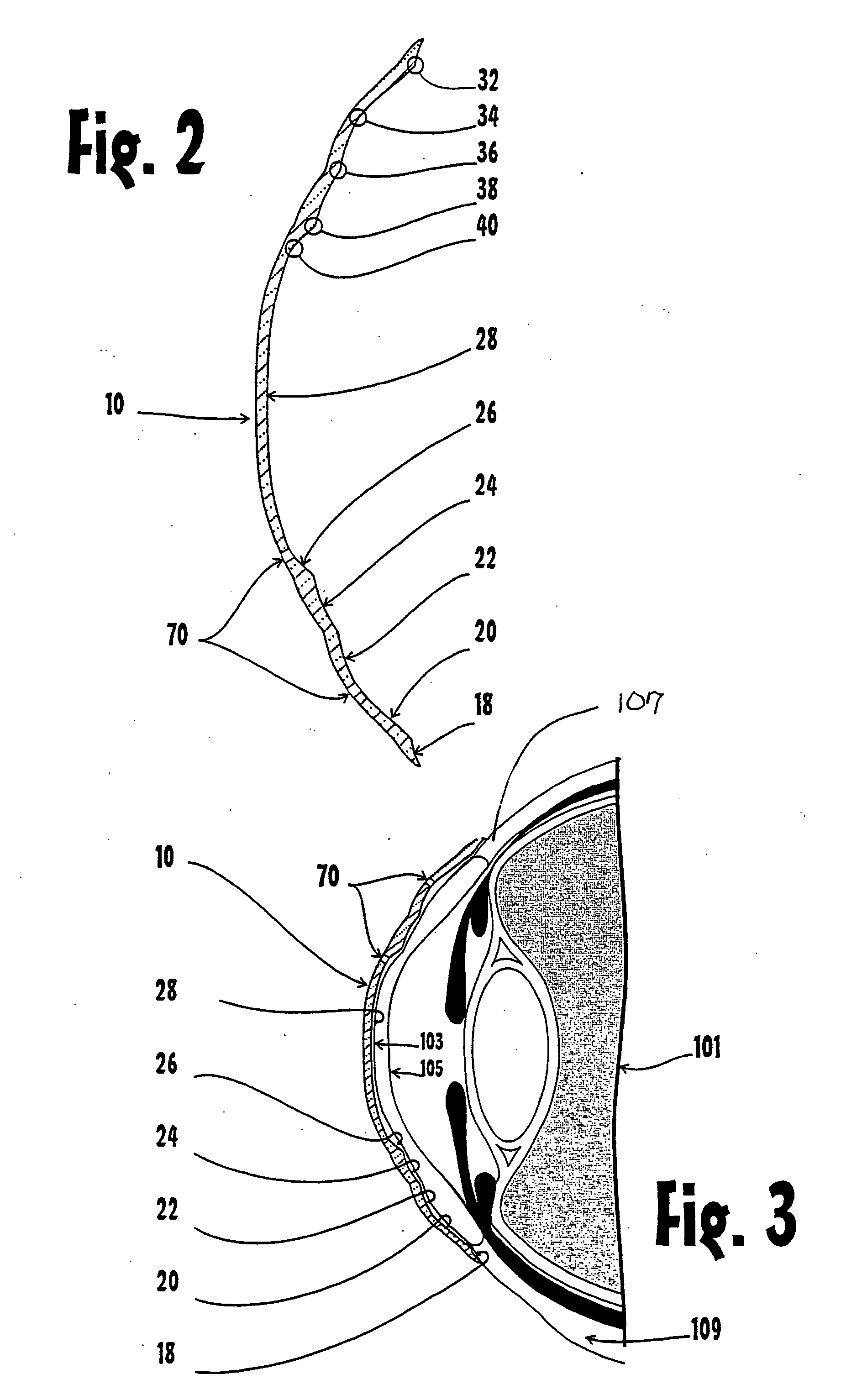Corneal-scleral orthokeratology contact lens
a corneal orthokeratology and contact lens technology, applied in the field of contact lenses, can solve the problems of insufficient localized pressure of soft contact lens material to alter the shape of the cornea, and compromises must be made in corneal orthokeratology contact lens design, so as to increase the ability to properly treat the eye
- Summary
- Abstract
- Description
- Claims
- Application Information
AI Technical Summary
Benefits of technology
Problems solved by technology
Method used
Image
Examples
Embodiment Construction
[0029] In this specification and in the claims which follow, reference will be made to a number of terms which shall be defined to have the following meanings: The terms “comprise”, “comprises”, “comprising”, “having”, “including”, “includes” or any variation thereof, are intended to reference a non-exclusive inclusion, such that a process, method, article, composition or apparatus that comprises a list of elements does not include only those elements recited, but may also include other elements not expressly listed and equivalents inherently known or obvious to those of reasonable skill in the art. Other combinations and / or modifications of structures, arrangements, applications, proportions, elements, materials or components used in the practice of the instant invention, in addition to those not specifically recited, may be varied or otherwise particularly adapted to specific environments, manufacturing specifications, design parameters or other operating requirements without depa...
PUM
 Login to View More
Login to View More Abstract
Description
Claims
Application Information
 Login to View More
Login to View More - R&D
- Intellectual Property
- Life Sciences
- Materials
- Tech Scout
- Unparalleled Data Quality
- Higher Quality Content
- 60% Fewer Hallucinations
Browse by: Latest US Patents, China's latest patents, Technical Efficacy Thesaurus, Application Domain, Technology Topic, Popular Technical Reports.
© 2025 PatSnap. All rights reserved.Legal|Privacy policy|Modern Slavery Act Transparency Statement|Sitemap|About US| Contact US: help@patsnap.com



